Japan Tour Travelogue- Part II
In this second travelogue, we hear more from the landscape professionals who traveled to Japan with the North American Japanese Garden Association during November of 2025. Experience the journey through their eyes and adventures as they share more of their stories.
Day 2: November 19 – Tokyo
On the second day of our tour, we covered several more gardens, went to a museum and
attended a networking reception held in a unique structure, filled with history and intrigue.

Hama-rikyu- shoreline for rising tide

Hama-rikyu- 300 year old pine tree
Hama-rikyu Garden was the personal family garden of the Tokugawa Shogun. It was a former fort for the Bay of Tokyo, and the water in the garden connected to the ocean, so it rose and fell, thus changing its appearance throughout the day.
It was not a fortress or a traditional garden. Rather, it was a fortified pleasure palace for the family and other elites. Duck hunting, fishing, falconry, and boating were just some of the activities they would have enjoyed. There were even riding grounds the Samurai used to practice horse archery. Highlights included the four tea houses and a 300-year-old pine tree. This was a place to be active and did not adhere to the design constraints of a stroll or tea garden.
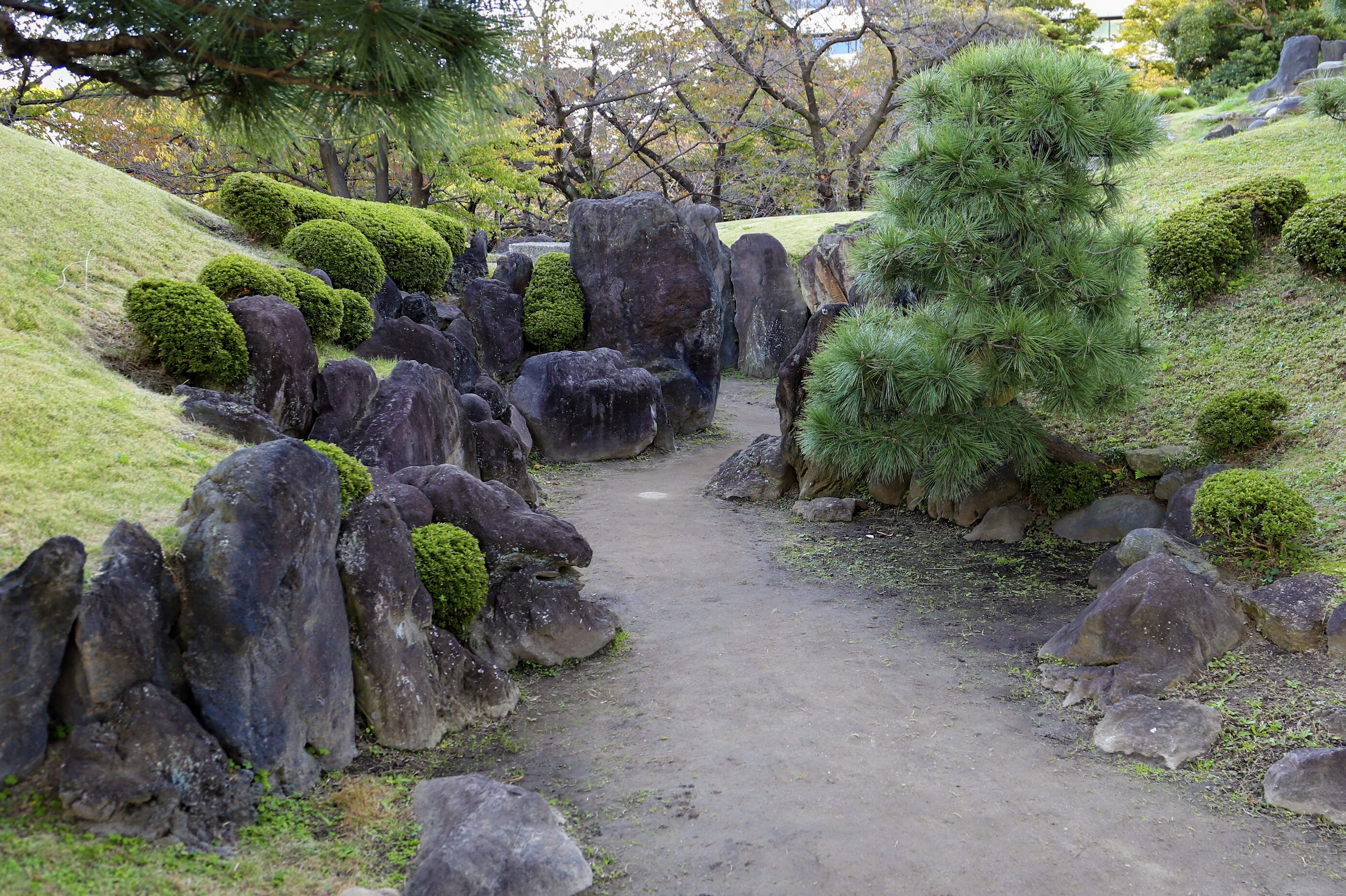
Kyu-Shiba-Rikyu- Dry Water Course
The next stop was Kyu-Shiba-Rikyu Garden, which is one of the oldest surviving gardens from the Daimyo period, dating back to the 1660s. This classic stroll garden was centered around a pond and featured excellent rock and land formations. It’s representational in style and harkens
back to other places and other scenes. There was a causeway that represents Seiko Lake in Hangzhou, China.
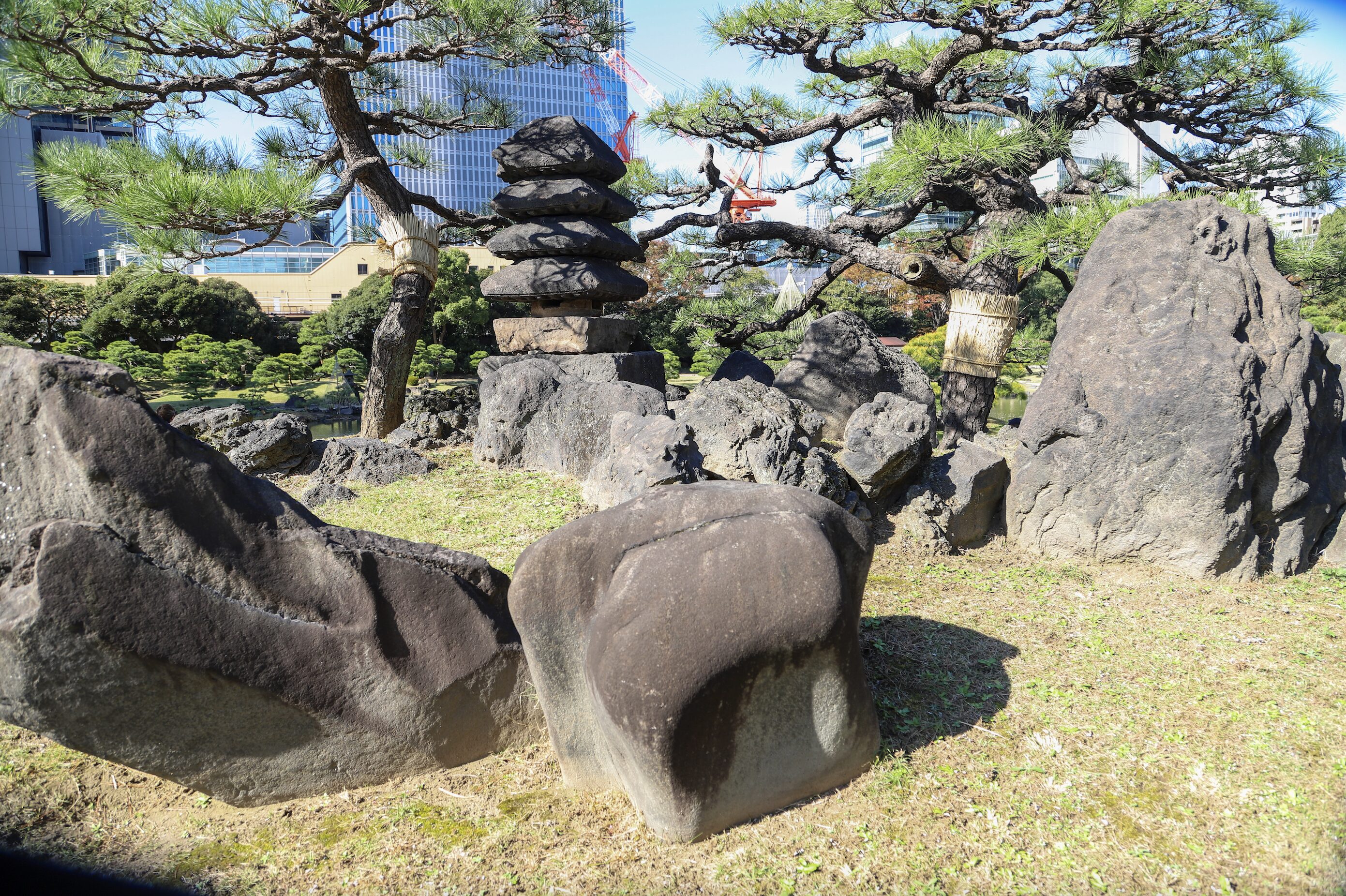
Kyu-Shiba-Rikyu- Mt. Reizan
The island in the center of the pond was the focus of the entire garden. Stone formations were modeled after the image of Reizan in China, the legendary mountain of eternal youth and immortality where the God Hsien lived. This garden demonstrated another example of the Karetaki use of stone. The “riverbed” provides several different views and is a strong design technique used to engage and thrill the viewer. Typical for this design, there was a central hill from which the view is spectacular and the whole garden is displayed below. The striking feature of the old Wisteria trunk and long trellis provides shade, and in the springtime, lavender blooms with an amazing aroma, help this garden stand apart.
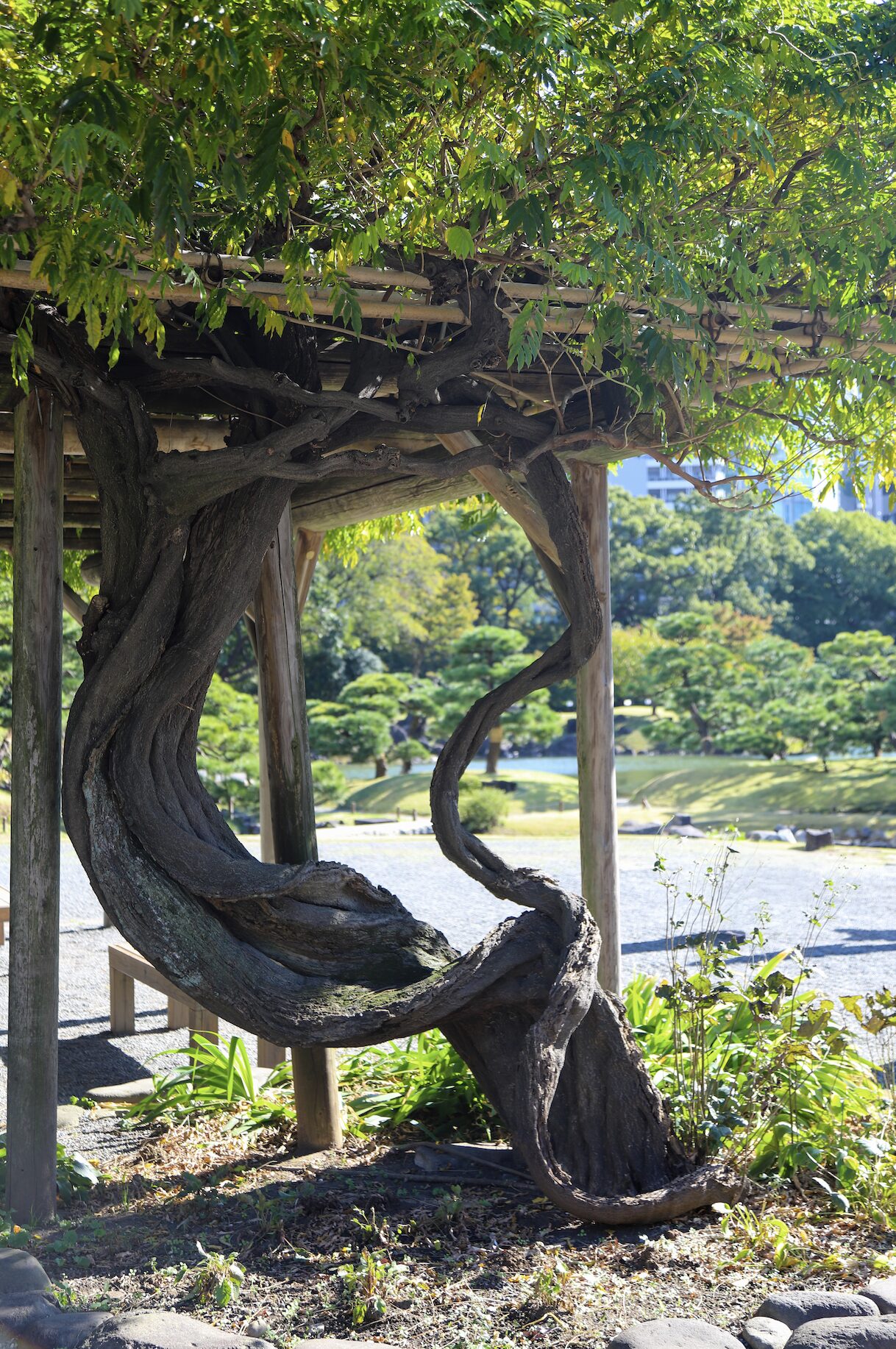
Kyu-Shiba-Rikyu- Wisteria

Tom with Sumo Cutout at the Edo Fukagawa Museum
The Edo Fukagawa Museum offered a nice break from the garden tours. The museum is known for reproducing the townscape of a village during the late Edo period (1830-1844) and focuses on period-correct details in the shops, homes, and street scenes of a river town. Additional scenes illustrated public spaces that included a shrine, communal well, garbage
dump, and toilets. It was financially supported by a retired Sumo wrestler and one of the participants (me) found a kindred spirit!
After the museum, we toured Kiyosumi Garden, which was a very fancy stroll garden of the Meiji period. It featured rare stones from abroad, arranged around the central pond and islands. Collecting rare stones was started in the 1720s by a legendary merchant who filled his returning ships with interesting stones from all over his far-flung territory as ballast. This was a time when
the merchants were creating the most beautiful gardens because of the immense wealth they were creating.
Kiyosumi Garden featured a large pond with three islands, a recreation of Mt. Fuji, and a tea house. The hill was planted with Azaleas below the summit to resemble floating clouds and the tea house jutted over the water for a spectacular view from it, and of it. But the real rock stars of the garden are, well, the rocks. There is a “Meiseki”, which is a register with their official names, that is 28 pages long. The inventive use of stones in the paths, steppingstones in the water,
and dry gardens was impressive. One of the stones is inscribed as a monument to Matsuo
Basho’s most famous Haiku: “An old pond, a frog jumps in, the sound of water.”
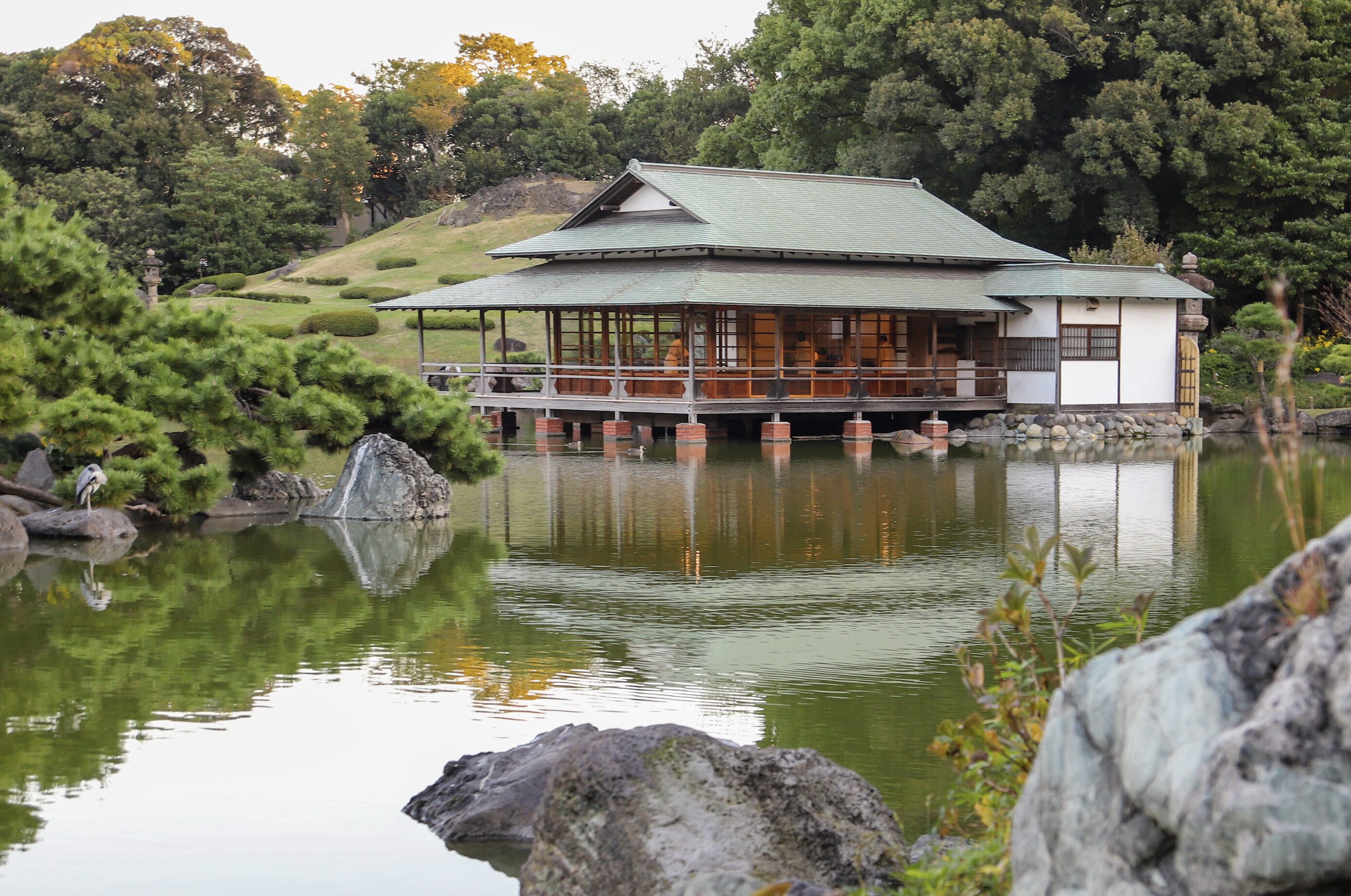
Kiyosumi- Mt. Fuji with Azalea Clouds Behind the Tea House
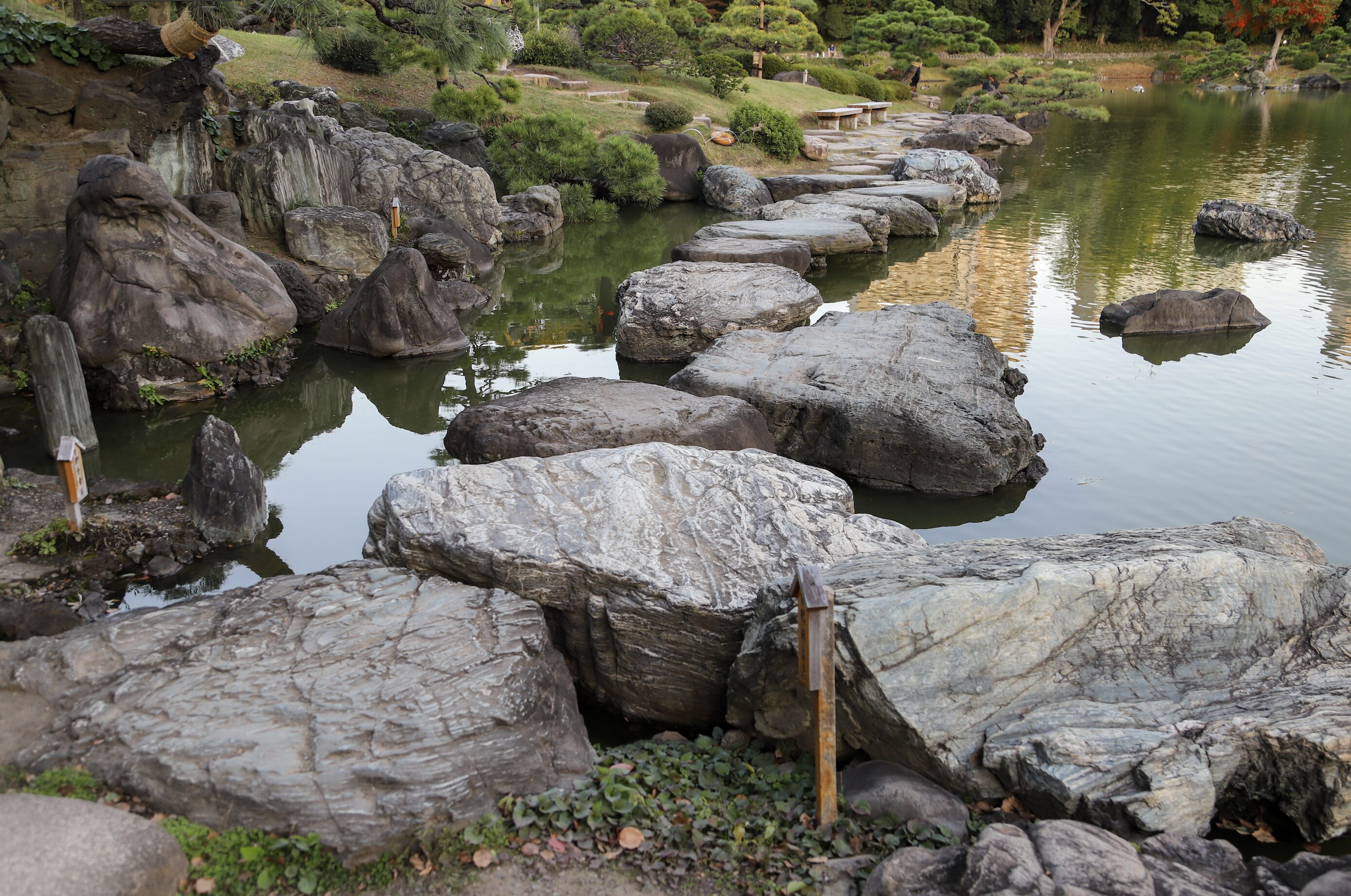
Kiyosumi- Amazing Rocks
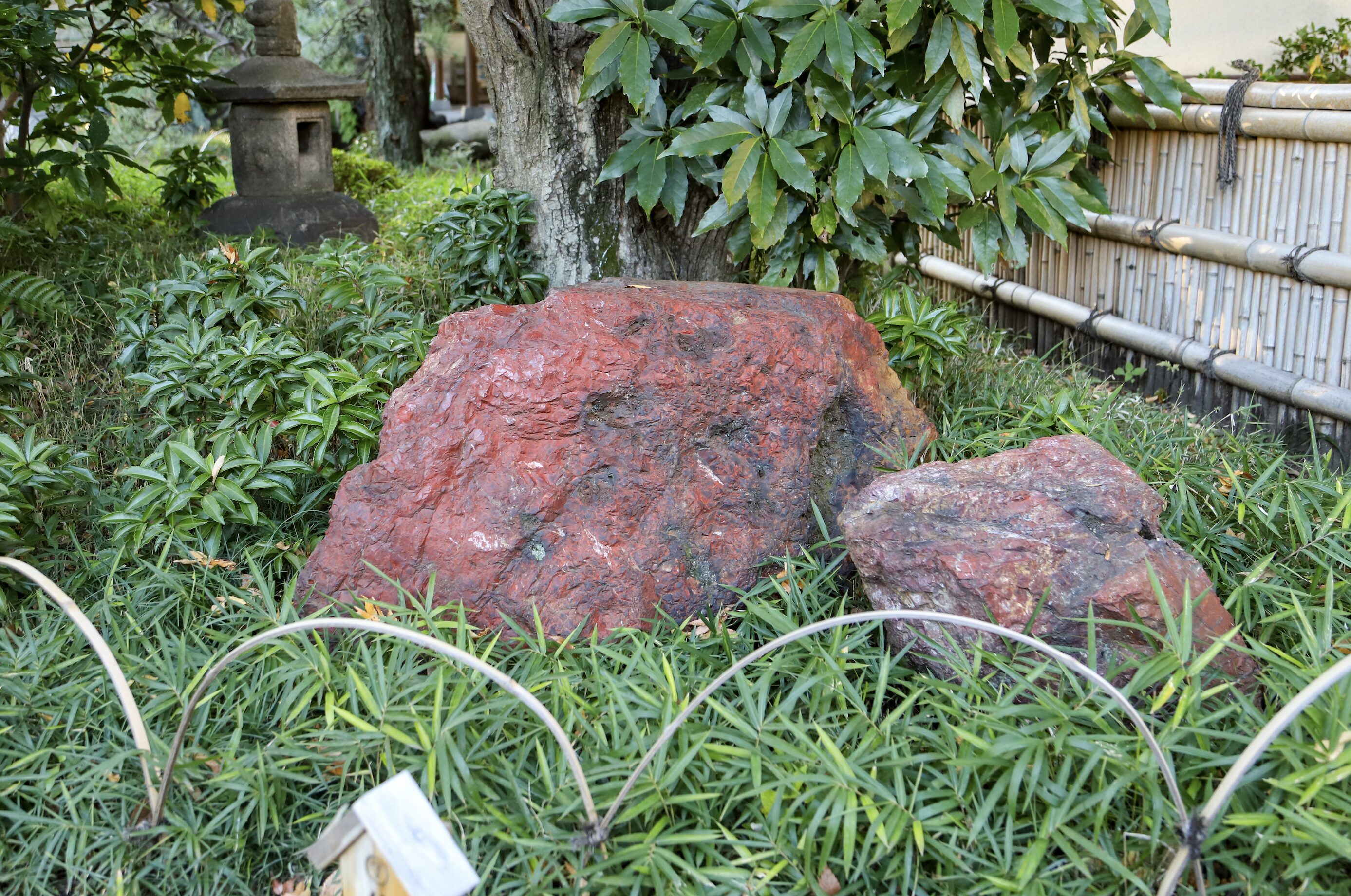
Kiyosumi- Impressive Stones
As our second day of touring wrapped up, the group attended a lovely reception in a relocated building that was originally used as the funeral hall for the Emperor Taisho. At the reception, Garden Society of Japan President, Dr. Hitoshi Uchida’s speech was a spirited endorsement of Japanese gardens, and he strongly advocated for continuing to develop and deepen relationships between members of the two associations.

TOM LUPFER
Founder & President - Lupfer Landscape Company
Tom Lupfer is the Founder and President of Lupfer Landscaping Company, former President of the Illinois Landscape Contractor Association (ILCA), and an esteemed member of the North American Japanese Garden Association (NAJGA).
